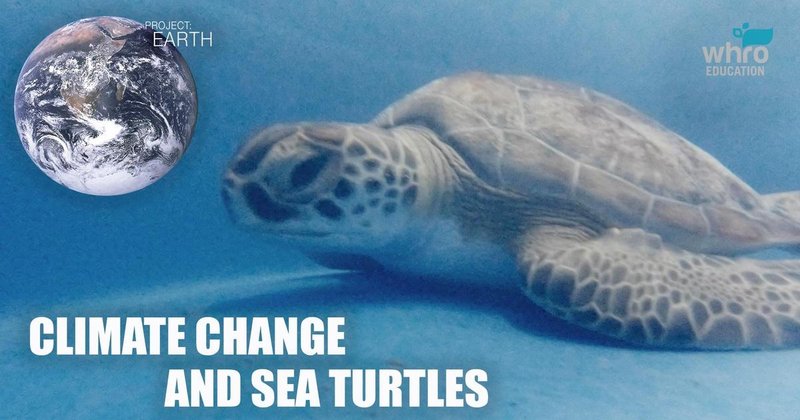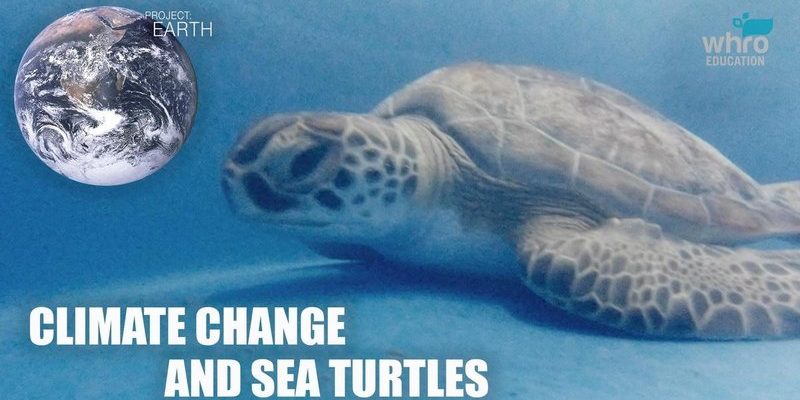
Climate change is like a slow, persistent wave that gradually builds and crashes over time. It affects sea turtles in several ways, from rising temperatures to changing ocean conditions. Each of these factors is a piece of a larger puzzle that threatens not just sea turtles, but the entire marine ecosystem. Let’s dive in and explore how climate change is reshaping the lives of these ancient mariners.
Rising Sea Temperatures
One of the most significant effects of climate change is the increase in ocean temperatures. Warmer waters can feel great during a hot summer, but for sea turtles, it’s anything but refreshing. Higher sea temperatures can disrupt their habitat and affect their feeding patterns.
You might be wondering why this is important. Well, sea turtles rely on specific types of sea grasses and algae, found in certain temperature ranges, for food. When the water gets too warm, these vital plants can die off or be pushed to different areas. This creates a food shortage, forcing turtles to travel further in search of sustenance. Imagine having to drive across town just to find your favorite pizza place, only to find it closed! Frustrating, right?
Additionally, warmer waters can lead to coral bleaching, which is detrimental to the entire marine ecosystem. The loss of coral reefs means a loss of shelter and food for many sea creatures, including the turtles that rely on these environments. The ripple effect continues to spread; when one part of the ecosystem suffers, others do too.
Altered Nesting Habits
Sea turtles are known for their incredible nesting behavior, laying eggs on sandy beaches that are often miles away from where they spend most of their lives. However, rising sea levels due to climate change dramatically alter these nesting areas.
With higher water levels, some beaches that were once safe nesting grounds are now submerged. That’s like having a favorite picnic spot wash away! Turtles may find themselves scrambling to find new places to lay their eggs, and unfortunately, not every new spot is suitable.
Moreover, temperature plays a critical role in determining the sex of turtle hatchlings. Warmer sands produce more female turtles, while cooler sands produce males. With the increasing temperatures, we might end up with an imbalance in the sex ratio, leading to fewer males entering the population. A lack of males means a harder time reproducing, creating a situation that could threaten future generations of sea turtles.
Ocean Acidification
You’ve probably heard that climate change is causing our oceans to become more acidic. This process, called ocean acidification, occurs when excess carbon dioxide (CO2) from the atmosphere is absorbed by seawater. As the ocean becomes more acidic, it poses significant challenges for marine life, including sea turtles.
You might be wondering how acid affects sea turtles. Well, it primarily impacts the creatures that make up their diet. Many of the turtles’ favorite foods, like shellfish, rely on calcium carbonate to build their shells. When the ocean is more acidic, it becomes harder for these animals to do so. If their food sources diminish or become less nutritious, turtles may struggle to find enough to eat.
In simpler terms, think of a restaurant where the chef suddenly can’t find good ingredients. The food might become bland or scarce, leaving diners unhappy and hungry. For sea turtles, this situation isn’t just inconvenient; it’s a matter of survival.
Increased Storm Frequency and Intensity
Climate change is also leading to more intense storms and unpredictable weather patterns, which can wreak havoc on sea turtle habitats. Strong storms like hurricanes can erase nesting beaches, disturb feeding grounds, and directly threaten turtles if they’re caught in rough seas.
Imagine trying to build a sandcastle only to have a sudden storm wash it away. That’s what happens to turtle nests during severe weather. Eggs can be destroyed in the chaos, and hatchlings can be swept away before they even reach the water.
Moreover, strong tides and storm surges can lead to the erosion of beaches, reducing available nesting sites. With fewer safe places to lay eggs, the odds of successfully raising the next generation decrease significantly.
Human Interaction and Conservation Efforts
As climate change alters their world, sea turtles are also grappling with increasing human interactions. Coastal development, pollution, and fishing practices can exacerbate the challenges they face. For instance, fishing nets can trap turtles, leading to injury or death.
But it’s not all doom and gloom. Many organizations are working hard to protect sea turtles and their habitats. Conservation efforts include creating protected nesting areas, conducting beach clean-ups, and raising awareness about the importance of reducing carbon footprints.
It’s like how we all come together to help a friend when they’re going through a tough time. By supporting these efforts—whether through donations or volunteer work—we can play a part in preserving these incredible creatures for future generations.
What Can You Do to Help?
You might be wondering, “How can I make a difference?” There are several ways to contribute to the conservation of sea turtles and combat climate change:
- Support organizations dedicated to sea turtle conservation.
- Be mindful of plastic use; reduce, reuse, and recycle to keep oceans clean.
- Participate in beach clean-up efforts, especially during nesting season.
- Educate others about the importance of protecting our oceans and its inhabitants.
- Consider reducing your carbon footprint by using public transportation or biking.
Every small action can lead to significant change. If everyone does their part, together, we can make a difference.
Climate change is not just a looming threat; it’s a current reality that deeply impacts sea turtles and their habitats. From rising temperatures and altered nesting habits to increased storms and acidification, the challenges are complex and daunting.
But the good news is that awareness and action can lead to positive change. Just like sea turtles have adapted and survived through changes for millions of years, we, too, can adapt our behaviors to protect them. By working collectively and supporting conservation efforts, we can help ensure that these ancient creatures continue to thrive in the oceans we share. Together, we can be the wave of change that makes a difference!

